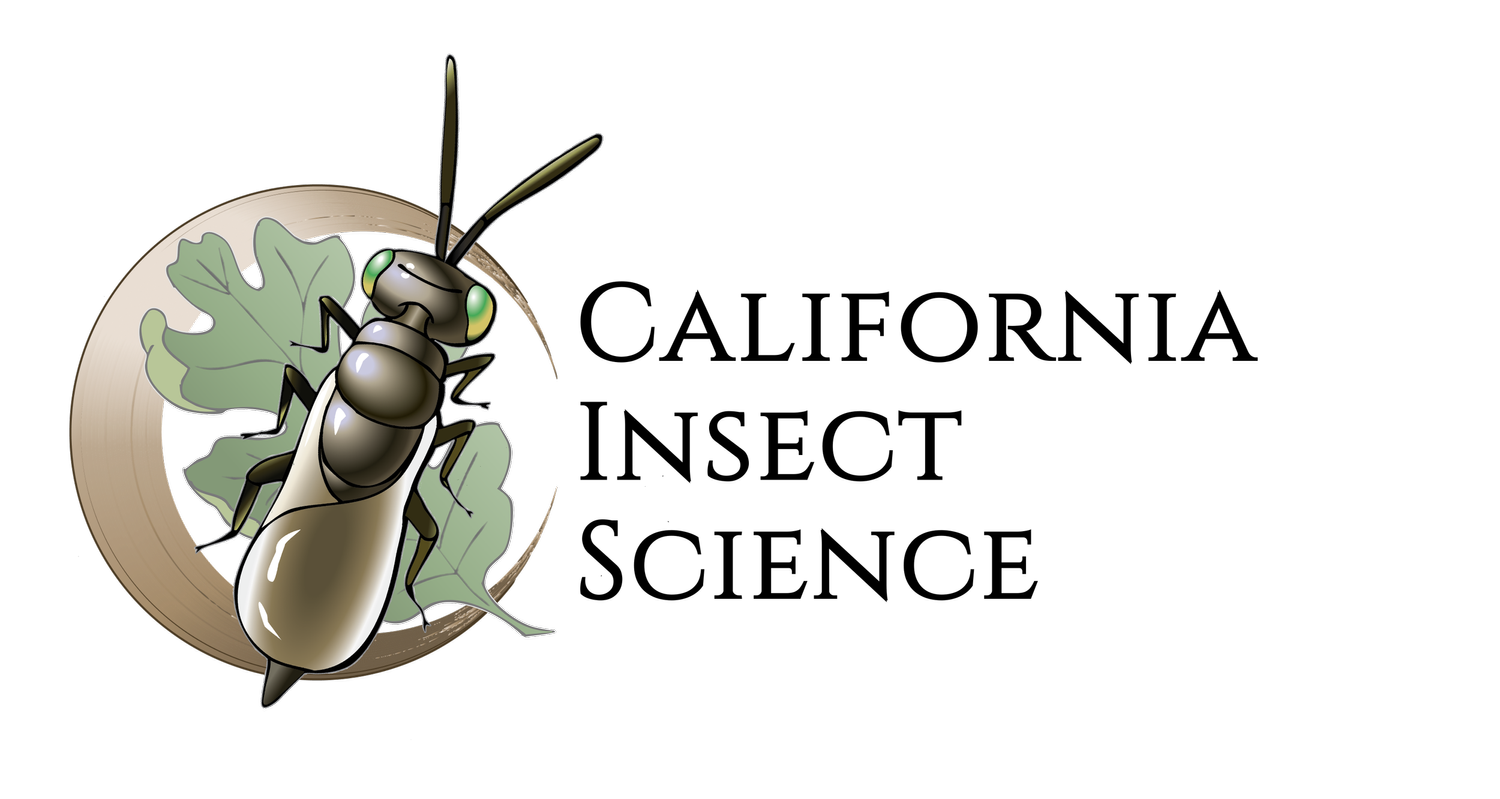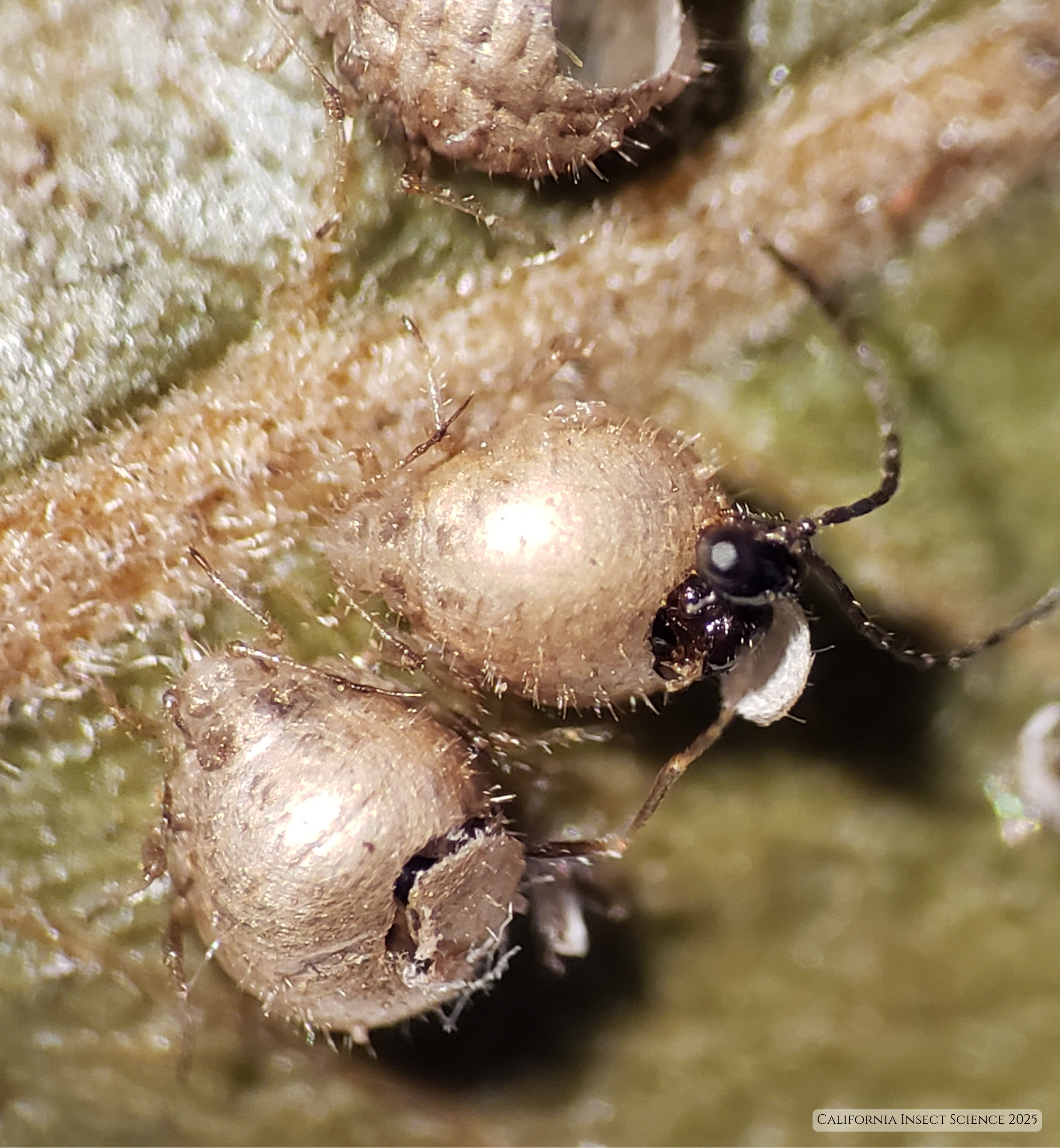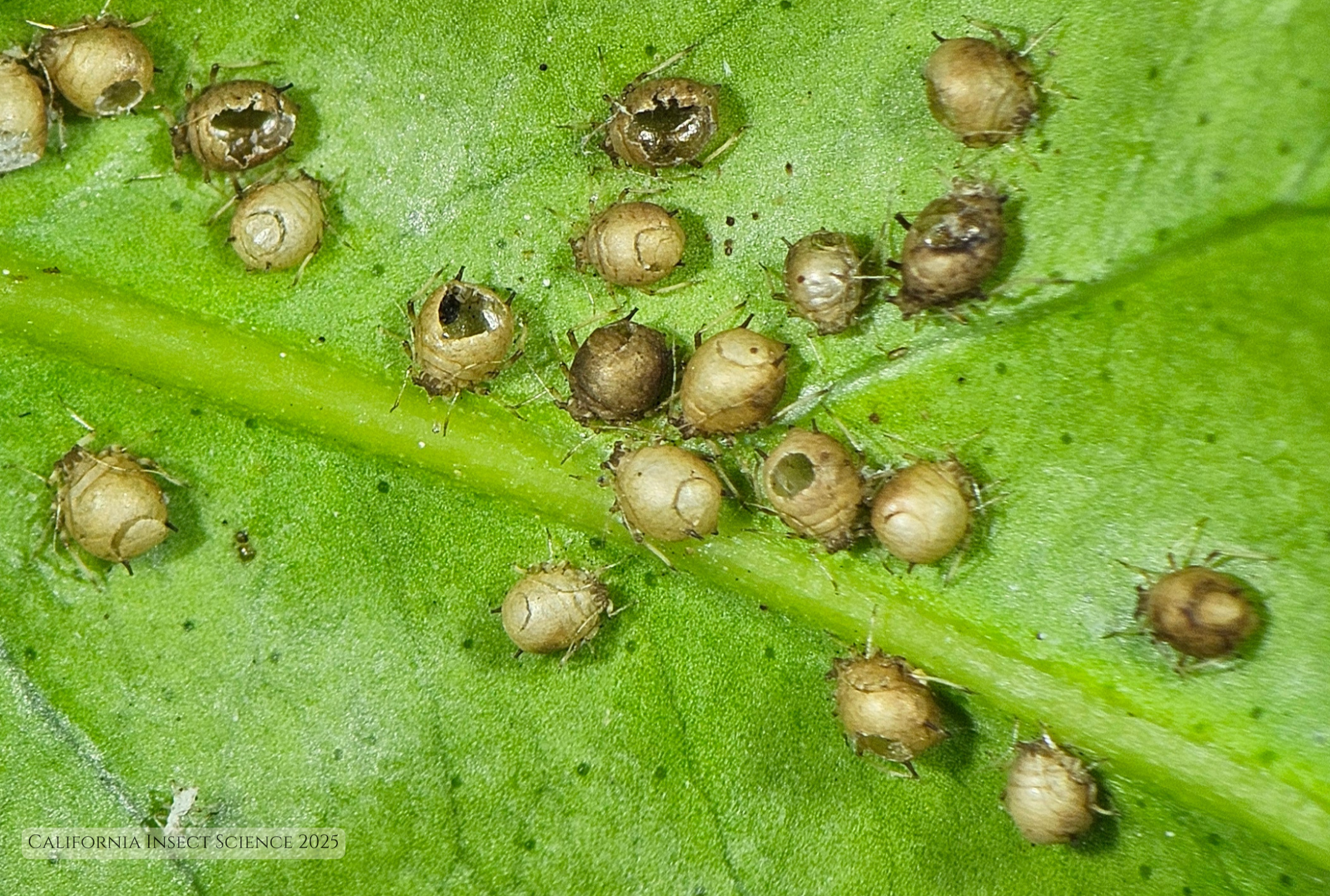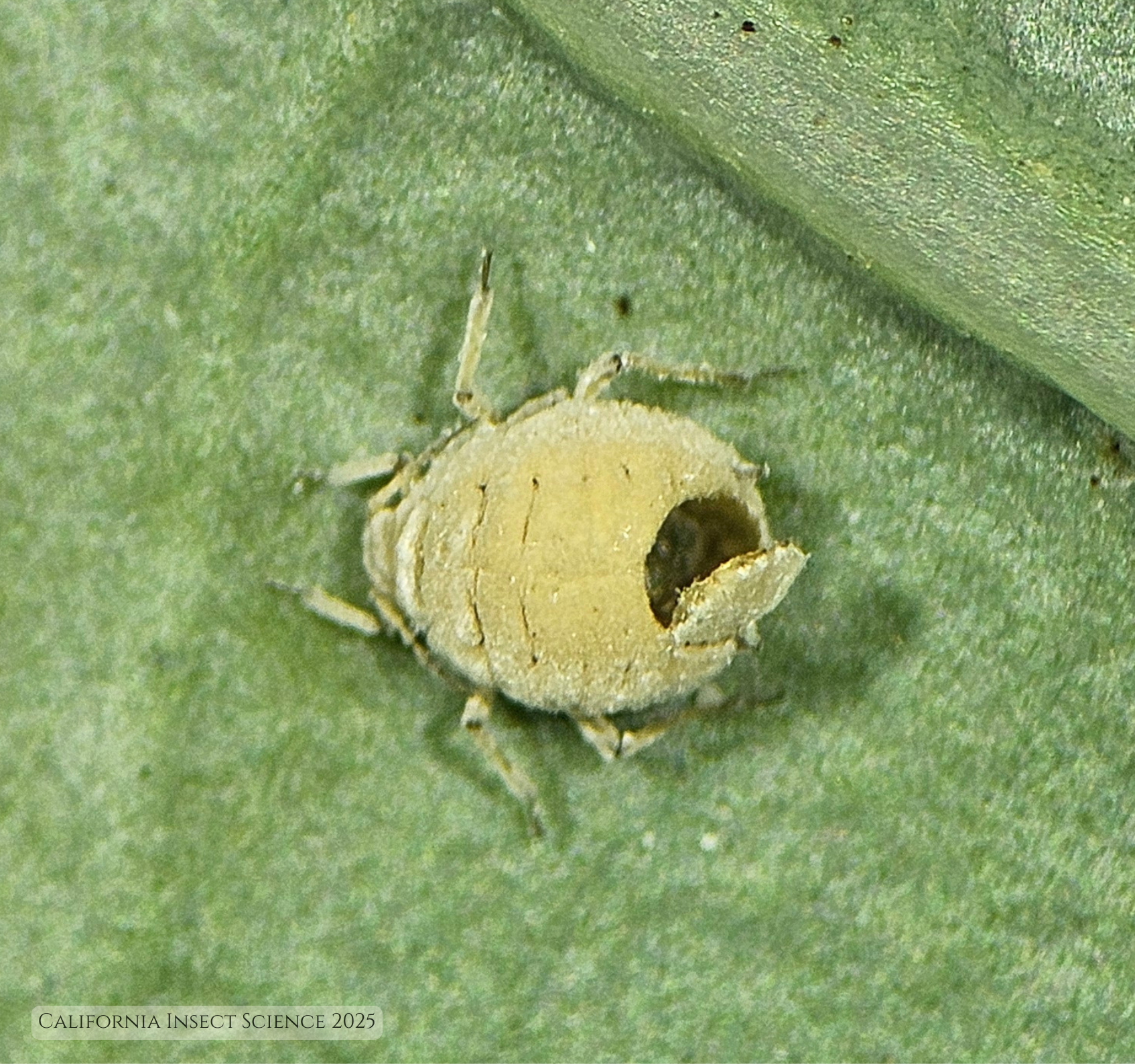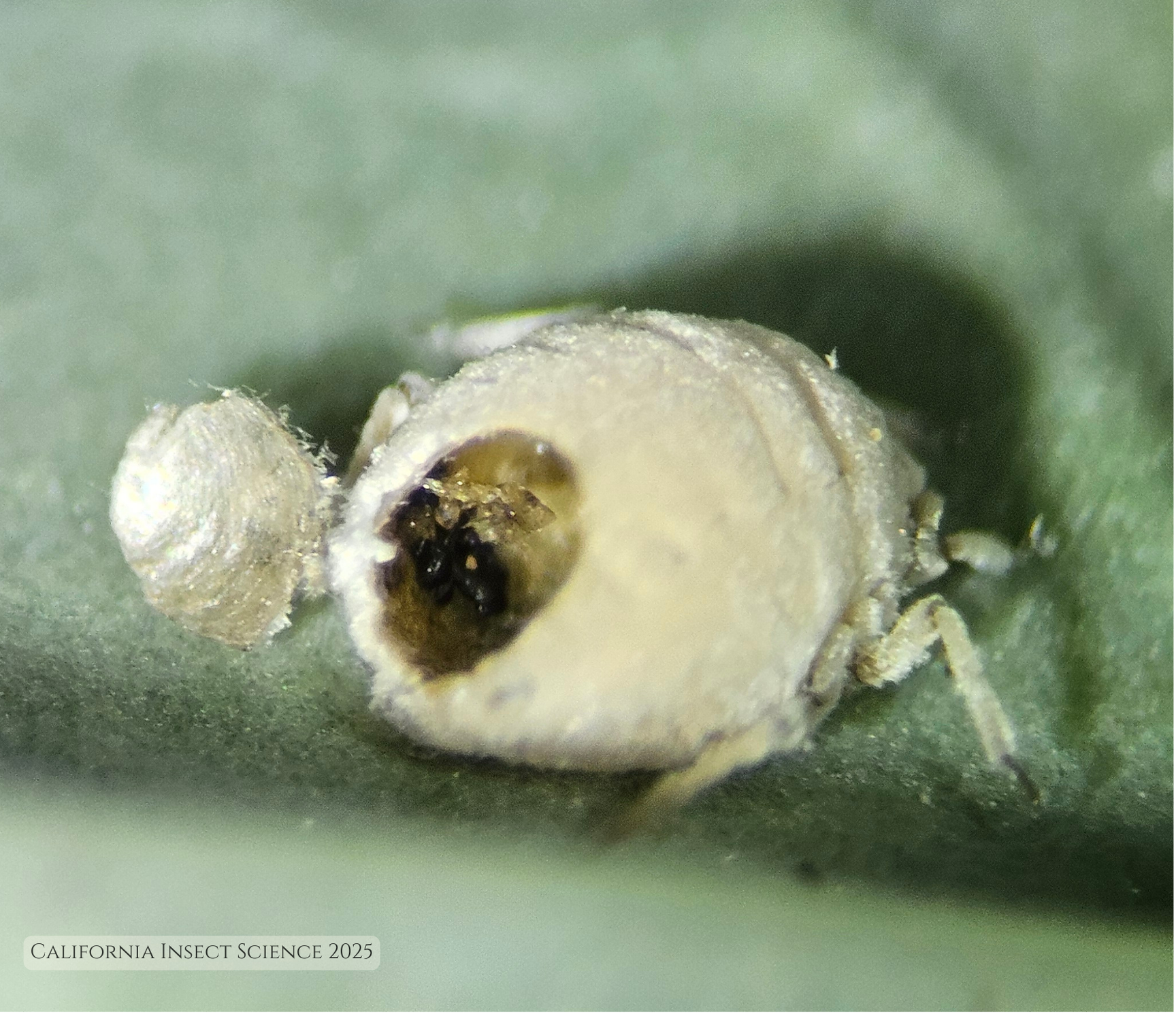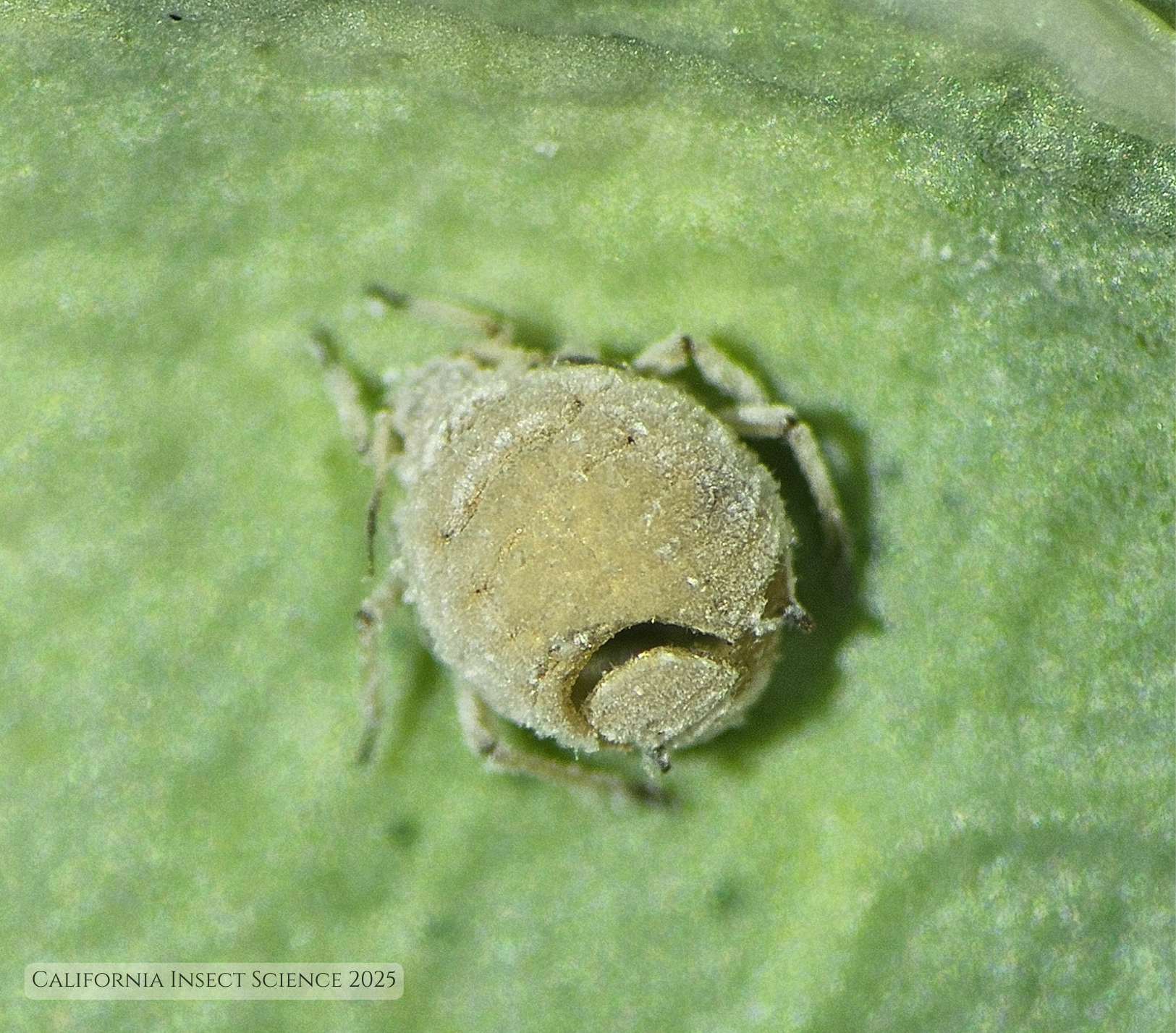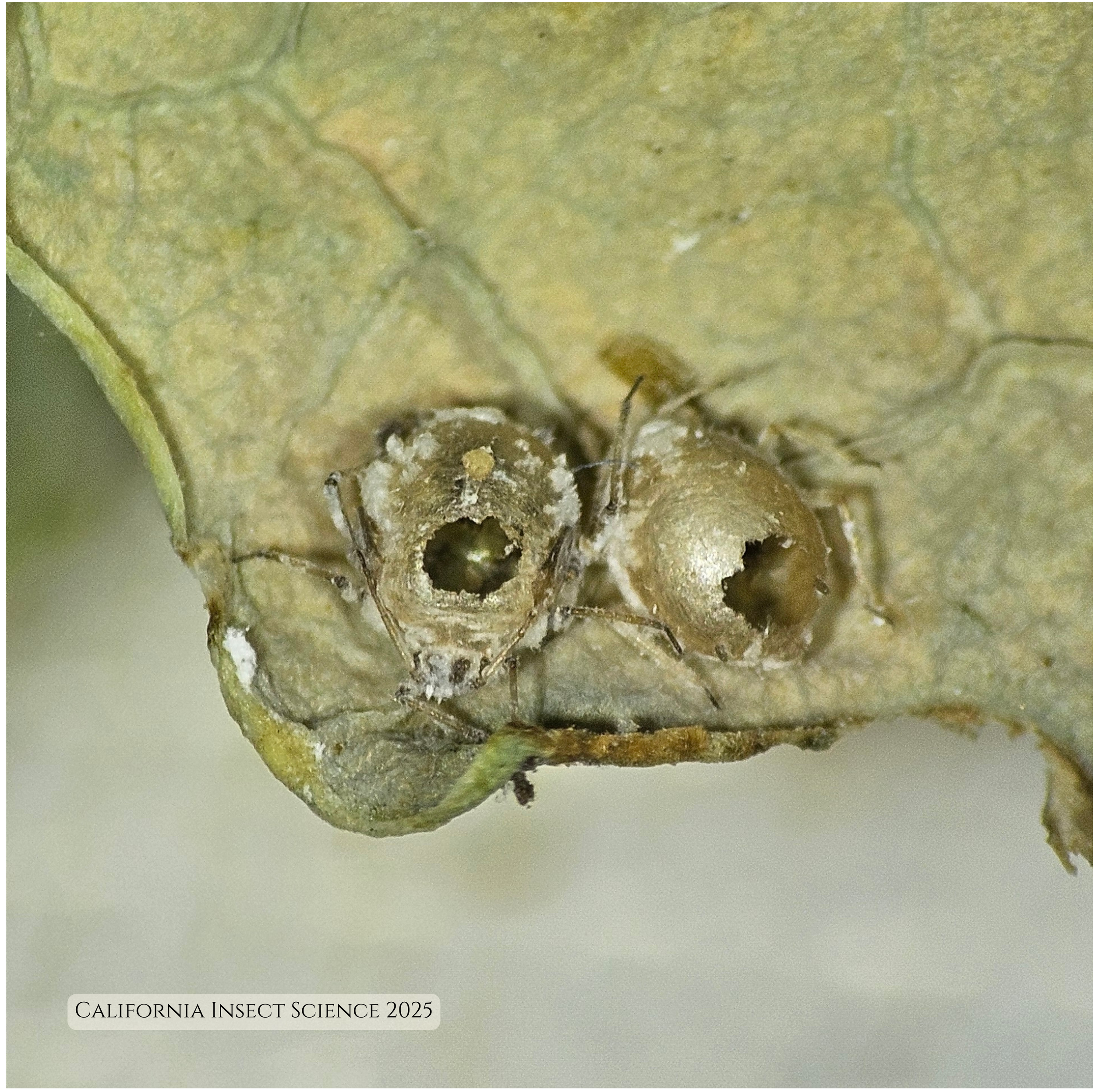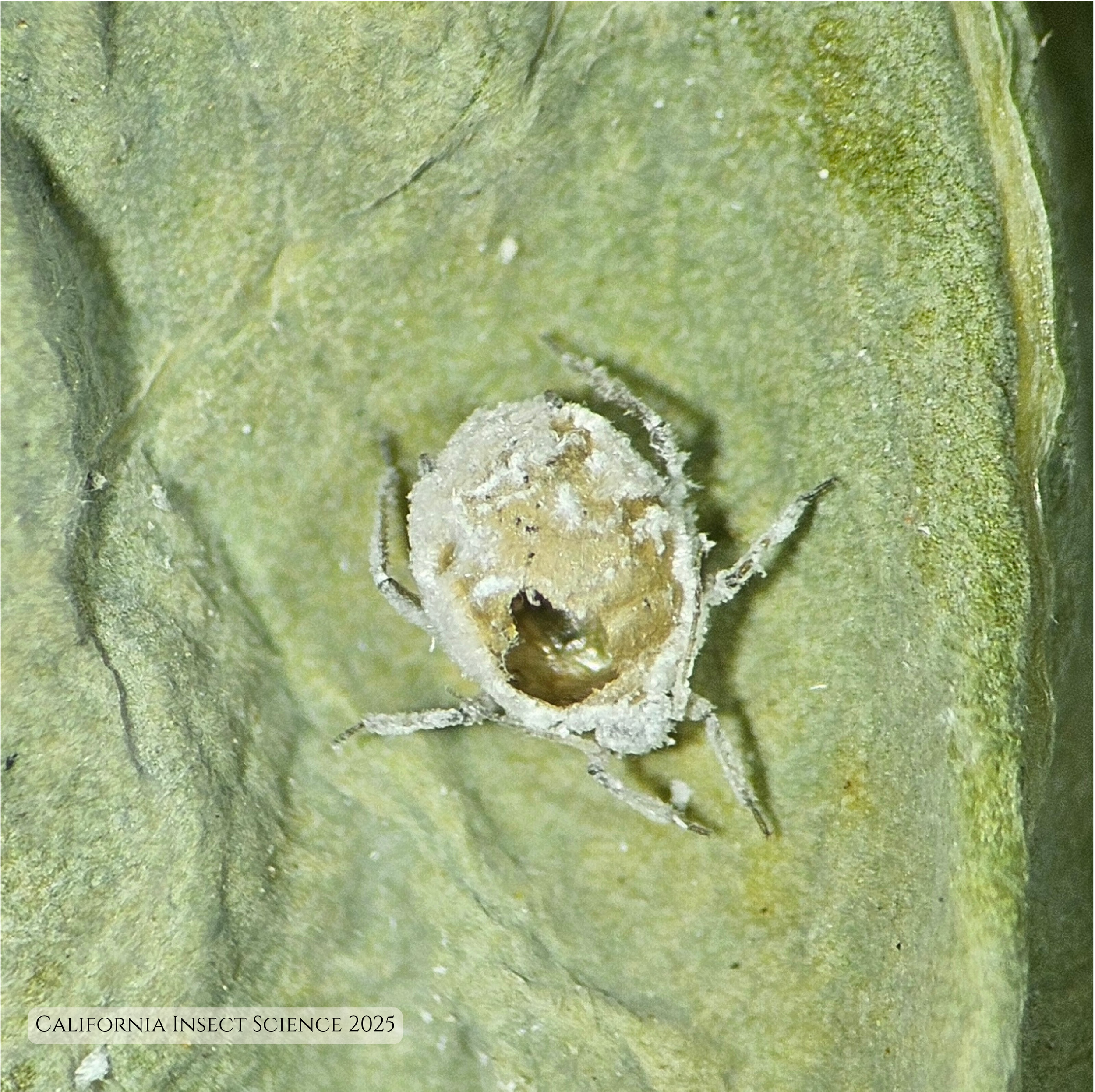Aphid Parasitism
Parasitoids and Hyperparasites
A female parasitoid locates a suitable aphid to support her young. When she’s found an aphid in the right condition, she will insert a single egg into the aphid’s body using her telescoping ovipositor (egg laying tube); it takes about 2-4 tenths of a second. The now parasitized aphid will go through a series of physical changes that lead to its eventual death. This process is slow at first. The wasp’s egg will eventually hatch and a microscopically tiny wasp larva will now be inside the aphid and begin feeding on non-essential parts, mainly the insects blood (=hemolymph). The process will end in a radical change to the aphid called mummification.
Aphid Mummies
Parasitoid - an insect that reproduces by injecting its eggs into another insect.
Aphid mummy - the integument of an aphid that has been transformed into a hardened cocoon by a wasp larvae that has developed within.
At the beginning of parasitization, the wasp egg inside the aphid may sit quiet for awhile; long enough to allow the aphid to grow to full size. The aphid is the only food source for the developing wasp larva and if it doesn't get enough aphid to eat, it won't make it to adulthood. Once hatched, the wasp larva feeds on non-essential innards, allowing the aphid to continue living. Eventually, the wasp larva will grow and begin to feed more thoroughly on the aphid’s body contents. But before it completely consumes the aphid, the wasp larva needs to create a protective shelter for its own pupal transformation to an adult wasp.
Parasitoids
How do you make a wasp from an aphid? It starts with a mother parasitoid seeking out a suitable host in which her young can develop.
The reason to enact this change is straightforward. The wasp larva is feeding while protected inside the aphid, but aphids are soft-bodied and have lots of predators. Therefore, it's risky to be housed within. Once the aphid has perished, it's likely to dislodge, fall to the ground and be eaten; thus, killing the wasp larva inside. To avoid this tragic ending, the wasp larva converts the aphid’s soft vulnerable integument into a hardened, stable container within which, the wasp larva can safely finish developing. The wasp larva begins this mummification conversion before completely consuming the aphid. Once mummification is complete the larvae will secrete chemicals from its body that hijacks the aphid's cells, thereby initiating the hardening of the integument.
The aphid body swells and sinks down against the leaf surface. Then the integument begins transforming and thickening while the underside of the body melts into a gel, gluing the aphid body onto the plant surface. The gel dries, securing the aphid body in place. The final step in aphid mummification requires the aphid’s integument cells to harden and change color to tan, sometimes black, depending on the wasp species. The wasp larva now has a secure home within which it can finish eating the rest of the aphid and go through its pupal development stage.
Wasp Emergence
Once fully developed, the adult parasitoid will use its mandibles (chewing mouthparts) to slowly cut its way out of the aphid mummy. The images here highlight the exit holes where the adult wasp cut out an escape hatch and entered the world.
While developing, the wasp larva must avoid contaminating its only food source while it's feeding and growing. To accomplish this, the larva holds all of its food wastes in one part of its gut and stores its metabolic wastes in another part. At pupation, when the larva no longer needs to feed, its finally safe to evacuate all the stored wastes. Look closely at the last photo of the exit hole. There is a cluster of small dark objects referred to as meconium. Meconium is the waste from the wasp larva.
Parasitoid wasps will work at parasitizing as many aphids as they can in an aphid colony. With luck, each mummy will eventually produce an adult parasitoid wasp which will then go on to parasitize more aphids.
Hyperparasites
Biological relationships are complex. The old adage that everything gets eaten by something isn’t profound enough to capture all the layers in the world of insect parasitism. For the parasitized aphids described above, we can now examine hyperparasitism.
According to Merriam-Webster, a hyperparasite is a parasite that is parasitic upon another parasite. That’s a lot of parasite business going down.
Aphid hyperparasitism starts with an aphid that has already been parasitized. The first to parasitize an aphid is called the primary parasitoid. The primary parasitoid larva is the one that initiates the development of a mummy. A mummy is what adult hyperparasitic wasps hunt for, because inside the mummy is the primary parasitoid larva or pupa and which is the meat needed for hyperparasitic larval development. To be perfectly clear, a hyperparasite larva does not feed on the aphid, it feeds on the primary parasite of the aphid.
After a hyperparasite adult female injects her egg into the parasitized aphid mummy, the egg or eggs hatch and her offspring will begin feeding. Eventually, the hyperparasite(s) will finish off the primary pupa, then pupate and finally emerge as an adult ready to search for more aphid mummies to hyperparasitize. For reasons unknown, the hyperparasite adult chews its exit hole off-kilter and not out the rear as a primary does. Also, the exit hole margins cut by a hyperparasite are often quite jagged. When examining aphid mummies, one should be able to distinguish which ones had primary parasitoids emerge from them, and which ones had hyperparasites emerge.
Common Hyperparasitoids on the Central Coast of California
Another off-kilter hyperparasite exit hole near the head of an aphid mummy.
Pachyneuron species female hyperparasitoid laying next to an aphid mummy.
There are two types of aphid hyperparasites common along the central coast of California. One is in the genus Alloxysta and the other is in the genus Pachyneuron. They are different biologically. Alloxysta larvae develop by feeding inside their host = endoparasitoid, whereas Pachyneuron larvae develop by feeding on the outside of their host body = ectoparasitoid.
An Alloxysta female seeks out an aphid mummy, and using her ovipositor, pierces into the mummy, locates the primary parasitoid larva within, and then implants one or more eggs into the primary parasitoid’s body. Her egg(s) hatches and her offspring feeds internally on the primary parasitoid. The hyperparasite larva completes its development, emerges as an adult from the primary parasitoid, and then chews its way out of the aphid mummy to start the cycle again.
Pachyneuron females also seek out aphid mummies, but they use their ovipositor to merely pierce the mummy. Then they proceed to lay a single egg on the outside of the primary parasitoid’s body. The egg hatches and the hyperparasite larva feeds from an external position on the primary parasitoid until it is consumed. A Pachyneuron larva then pupates, becomes an adult and chews its way out of the mummy to start the cycle again.
These two aphid mummies had hyperparasite adults emerge. Note the mummy on the left has an exit hole near its head and the one on the right is very jagged.
Alloxysta species adult female hyperparasitoid laying next to an aphid mummy.
